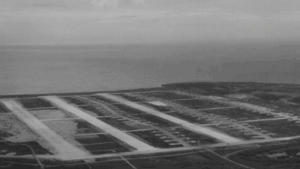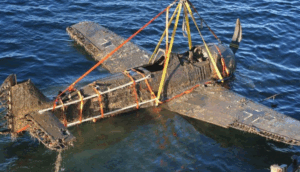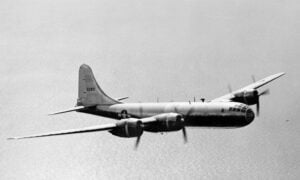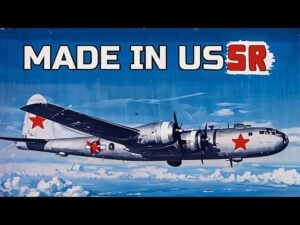Ever Heard the Story of the Japanese Floatplane That Fought a B-29

Rex's Hangar / YouTube
In the late 1930s, the world was on the brink of a massive conflict, and military innovations were rapidly evolving. Among various advancements, the Imperial Japanese Navy sought to revamp its air reconnaissance capabilities. This led to the development of one successful design from Aichi Kokuki, the E13A, which emerged as a significant contributor during World War II, particularly within the Pacific battles.
Development and Design of the E13A “Jake”
The E13A, affectionately known by Allied forces as “Jake”, began its journey in 1937 when the Imperial Japanese Navy demanded a new aircraft to replace the aging Kawanishi E7K2, a trusty but outdated reconnaissance floatplane from the early ’30s. Aichi, Kawanishi, and Nakajima, three leading Japanese aircraft manufacturers, were all asked to submit proposals. Kawanishi and Nakajima, more seasoned in designing such aircraft, were immediate favorites, but Aichi was undeterred and joined the competition.
Aichi’s initial response was the E12A, but after the Navy later revised specifications seeking a three-seater seaplane, Aichi modified their design to create the E13A. The E13A featured metal construction, although some parts like the ailerons, elevator, and rudder retained fabric covering. Initially, the plane carried minimal armament, which later included a rear-facing 7.7 mm Type 92 machine gun and, eventually, a downward-firing 20 mm cannon to enhance firepower. Despite these modifications, it remained lightly armed throughout its service.
What set the E13A apart was its practical design. It had a wingspan of 14.5 meters and a foldable wing mechanism for easy storage on ships. The aircraft, weighing approximately 2,642 kilograms empty, could take an additional load up to 1,000 kilograms. Its robust Mitsubishi Ken C43 engine, a 14-cylinder radial beast, provided 1,080 horsepower. This combination allowed for impressive range and operational flexibility from Japanese Navy ships, launching via catapult and being hoisted back aboard with a crane after completing its mission.

Combat Service and Operational Versatility of the E13A
Officially adopted by the Navy after comparative trials in 1940, the E13A became an essential tool. Its combat debut came during the Second Sino-Japanese War, where it participated in bombing a Chinese railway. But its defining moment was its role in the Pearl Harbor attack, where it performed pre-raid reconnaissance. This act alone marked its critical role in what would become some of the most intense naval confrontations of World War II.
Throughout the war, the E13A was pivotal in various operations, from coastal patrols to ground attacks and even sea rescue missions. Its ability to function in multiple roles made it a constant presence in Japanese naval strategy. The plane’s design allowed for excellent visibility and handling, both in the air and on water. Despite its vulnerability due to lacking armor and self-sealing fuel tanks, the E13A could endure missions of up to 15 hours, a notable feat for a single-engine seaplane of its time.
One particularly striking incident involving the E13A occurred on May 5, 1945. In what could only be described as a mismatched battle, an E13A engaged a B-29 bomber over the Bongo Sudo Strait. This encounter, although proving disastrous for the E13A, underscored the challenging conditions under which Japanese pilots operated.

Legacy and Post-War Service of the E13A
Post-war, the E13A’s story didn’t end with Japan’s surrender. The French Naval Air Force adopted several units during the Indochina War, repainting them and integrating them into their operations until 1947. Thailand also used the E13A until 1948, marking the final chapter in the aircraft’s extensive service history. Throughout its operational life, spanning from its induction in 1941 to its final flights post-World War II, the E13A remained a resilient player in naval aviation.
This remarkable aircraft, built to a total of 1,418 units, now rests mostly in oblivion with few known wrecks and no surviving complete models, aside from a possible restoration candidate in Japan. While not as celebrated as other warplanes, the E13A’s contributions to naval aviation and its adaptation to various war-time roles are certainly worth remembering.




















